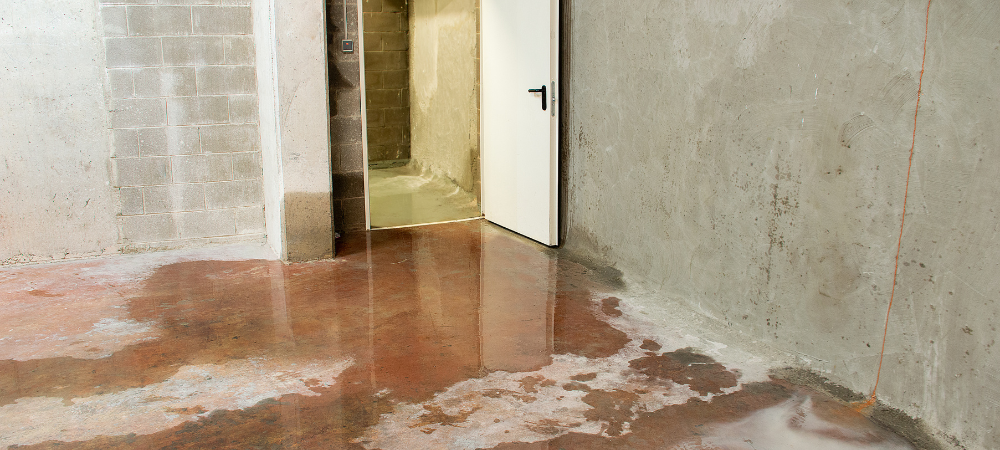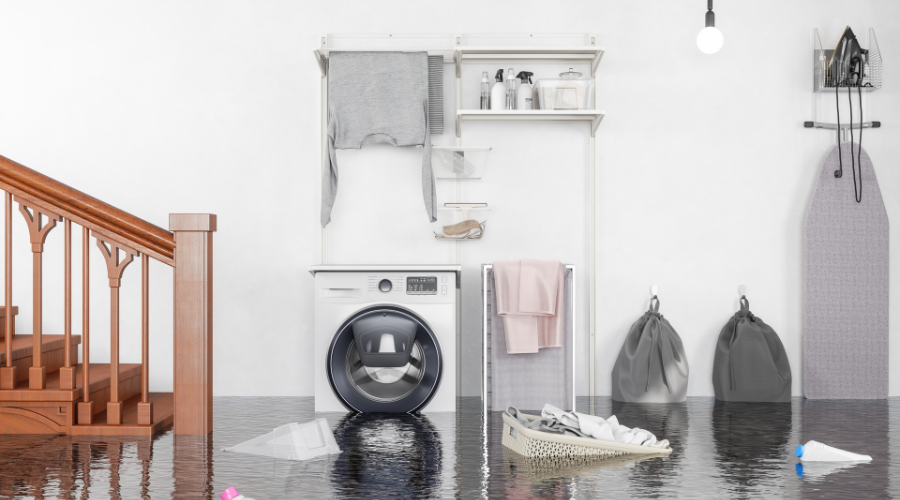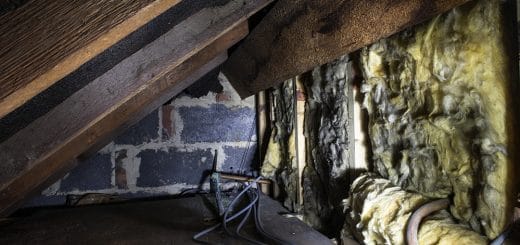Sewer Backups Causing Flood, Water, and Mold Damage
Sewer Backups
Sewer backups have the potential to occur both inside and out of the home. On the inside, it can be caused from blockages from tree roots or blocked pipes. But on the outside, the problem can be much worse. When experiencing a heavy thunderstorm, the door is always left open for floodingFlooding is the overflow or accumulation of water in areas t... More. This is caused by a sewer backup. When the drainage pipes underground begin to overflow, water quickly floods the streets. Next thing you know, you have a waterfall flowing into your home!

Dealing with a Flooded Home
So you may be walking around your home with water up to your ankles. As if this isn’t enough, it gets worse. You will have water damage or even moldMold is a type of fungus that grows in damp or humid conditi... More that will be left behind after the water is drained. FloodingFlooding is the overflow or accumulation of water in areas t... More has always been one of every homeowner’s worst fears. The water damage from sewer backups, depending on the amount of water, can cost a homeowner their precious belongings or even their home. In some cases, insurance companies do not always cover the cost of flood damage. So what do you do to clean up this mess? Here are a few steps to follow:
- File a Damage Claim with your insurance provider. Even if you are unsure whether or not you are covered under your policy, it is always best to alert your provider. A representative will be sent to inspect the damage of your home and provide you with the type of coverage based from their evaluation.
- Save your expenditure receipts. Filing all receipts related to the treatment of flood damage will work to your benefit when processing the insurance claims.
- Document all flood damage. Taking pictures before and after the flood damage will eliminate any disputes between you and your insurance company after the big bill comes in.
- Call a flood cleanup professional. The longer the standing water is left untreated, the more water damage it will cause to your home. As soon as you get off the phone with your insurance company, be sure to call a flood damage restorationRestoration is the process of returning a property to its pr... More professional to get this mess fixed. They will inspect the damage, provide you with a restorationRestoration is the process of returning a property to its pr... More plan, and a quote of the repairRepair is the act of fixing or restoring damaged property, m... More cost.

So I have the water damage removed, now I found mold…
Even after the water damage has been repaired, it is still possible to encounter moldMold is a type of fungus that grows in damp or humid conditi... More in other areas within your home. A strong possibility could be that the condensation of the water in your home has allowed for moisture to accumulate in the ceiling and/or other walls. Here are a few moldMold is a type of fungus that grows in damp or humid conditi... More treatment and preventionPrevention refers to actions taken to reduce the likelihood ... More tips:
- Remove porousPorous describes a material that contains small openings or ... More materials. Because moisture is able to accumulate in these small areas, moldMold is a type of fungus that grows in damp or humid conditi... More is able to thrive. Any materials with small holes including ceiling tiles, cardboard, fabrics, gypsum board, and fiber boards should be removed where the moldMold is a type of fungus that grows in damp or humid conditi... More is growing.
- Bleach or add baking soda to the affected area. As long as the area does not contain pores, it is safe to use bleach or even baking soda to kill the bacteria that still lingers. When applying baking soda, make sure to allow 30 minutes to let it settle before scrubbing. Be sure to use bleach with caution as it can cause corrosion to the electrical and metal components in your home.
- Call a professional. Even after all that scrubbing with baking soda and bleach, sometimes you just can’t get it all. That’s when it’s time to call a moldMold is a type of fungus that grows in damp or humid conditi... More removal professional. They’ll take care of that last stubborn spot you’ve been scrubbing for the past twenty minutes or even take care of all of the molds for you.
- Ensure proper air ventilationVentilation is the process of exchanging or circulating air ... More. Even after all of the moldMold is a type of fungus that grows in damp or humid conditi... More has been removed, there is no guarantee that it won’t come back later on. Allowing proper ventilationVentilation is the process of exchanging or circulating air ... More throughout your home such as running the heat or air conditioning will reduce moisture which in turn makes it difficult for bacteria to grow.
- Keep your home updated. As the materials (wood, stone, drywall, etc.) used to build your home continue to age over time, they will develop cracks; this allows for moisture to seep in, followed by bacteria. Just be sure to replace these when necessary and you shouldn’t have any problems in the future.
So who would’ve known that flood damage could have such a long term effect on your home? It all starts with that heavy rainstorm. The water running off the streets will eventually accumulate underground, causing a sewer backup. The water has nowhere to go but into your home, now making it your problem. The effects of water damage can be devastating, but it is imperative to have it restored as soon as possible in order to prevent further damage(moldMold is a type of fungus that grows in damp or humid conditi... More) in the future. Everyone knows that there is no stopping mother nature; however, taking the proper steps to prepare for floodingFlooding is the overflow or accumulation of water in areas t... More will surely save you costly damages in the future.
Dealing with Water Damage

In the event, you have incurred severe water damage or flood in your home, be sure to locate RestorationMaster for immediate water damage repairRepair is the act of fixing or restoring damaged property, m... More services. Our professional technicians will not only extract the water but effectively restore the affected materials caused by the water or moisture. If there is moldMold is a type of fungus that grows in damp or humid conditi... More growth on your property, you can also have it properly removed using mold remediationMold remediation is the process of identifying, removing, an... More services.












